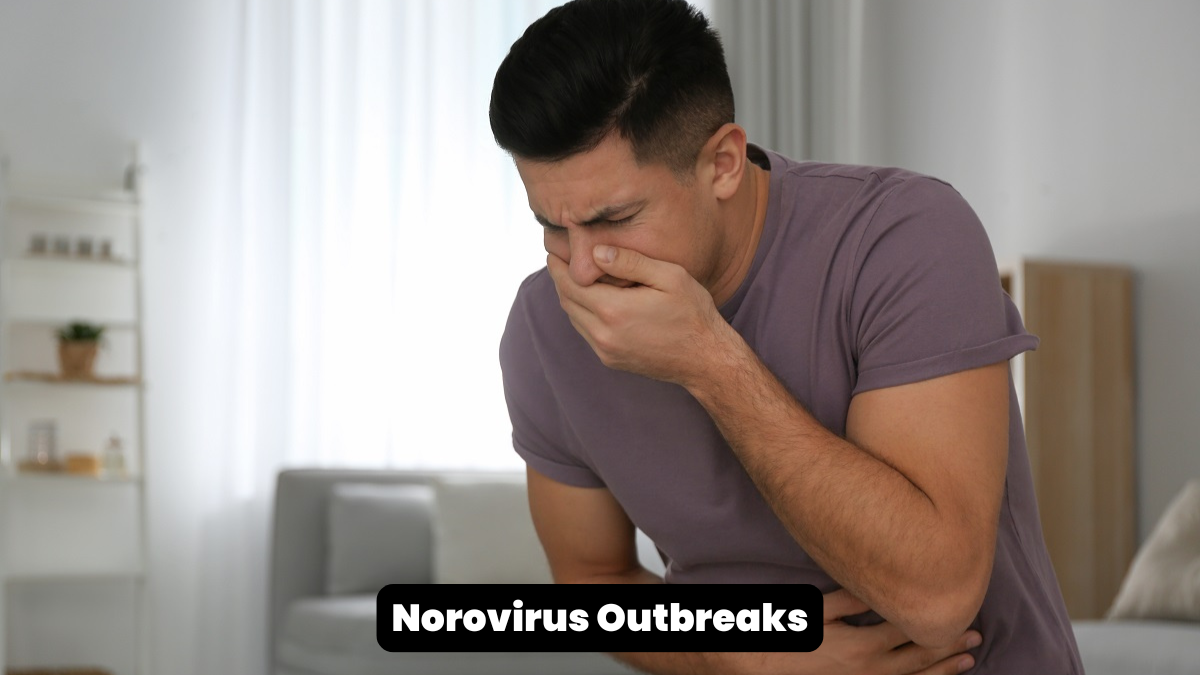Norovirus Outbreaks:Norovirus, often referred to as the “winter vomiting bug,” is a highly contagious virus responsible for outbreaks of gastrointestinal illness worldwide. It is notorious for causing acute gastroenteritis, which leads to symptoms like vomiting, diarrhea, and stomach cramps. Despite its common association with winter months, outbreaks can occur year-round.
What is Norovirus?
Norovirus belongs to the Caliciviridae family and spreads rapidly through contaminated food, water, surfaces, and close contact with infected individuals. Known for its resilience, norovirus can survive on surfaces for prolonged periods, making it challenging to control in crowded or shared environments.
Symptoms of Norovirus Infection
Norovirus infections typically manifest 12 to 48 hours after exposure and include:
- Nausea
- Vomiting
- Watery diarrhea
- Stomach cramps
- Low-grade fever
- Muscle aches
Most symptoms resolve within 1 to 3 days, but severe dehydration may occur, especially in young children, the elderly, and those with weakened immune systems.
How Norovirus Spreads
Norovirus is highly infectious and can spread through multiple pathways:
- Contaminated Food and Water: Improperly handled or uncooked foods are a primary source of infection.
- Direct Contact: Touching infected individuals or contaminated surfaces can easily transmit the virus.
- Aerosolized Particles: Vomiting or flushing toilets can release viral particles into the air, increasing the risk of transmission.
High-Risk Environments for Outbreaks
Certain settings are more susceptible to norovirus outbreaks:
- Cruise Ships
- Daycare Centers
- Nursing Homes
- Restaurants and Catered Events
- Schools and Colleges
These environments often involve close proximity and shared resources, which facilitate rapid virus spread.
Recent Norovirus Outbreaks
In recent years, norovirus outbreaks have been reported globally, highlighting its persistent threat. For example:
- Cruise Ship Outbreaks: Norovirus is infamous for affecting cruise passengers, where close quarters and shared dining spaces amplify the spread.
- School Outbreaks: Educational institutions frequently experience outbreaks due to shared facilities and limited hygiene compliance.
Prevention Measures
Preventing norovirus outbreaks requires stringent hygiene and food safety practices. Here are key strategies:
- Hand Hygiene:
- Wash hands thoroughly with soap and water for at least 20 seconds, especially after using the restroom or before handling food.
- Use alcohol-based hand sanitizers if soap and water are unavailable, although they are less effective against norovirus.
- Food Safety:
- Cook seafood and other high-risk foods thoroughly.
- Wash fruits and vegetables properly before consumption.
- Surface Disinfection:
- Clean and disinfect frequently touched surfaces using bleach-based cleaners.
- Wash contaminated laundry promptly and handle it carefully.
- Isolation of Infected Individuals:
- Infected persons should stay home until at least 48 hours after symptoms subside to prevent further spread.
- Proper Waste Disposal:
- Dispose of vomit and fecal matter responsibly, ensuring minimal exposure to others.
What to Do During an Outbreak
If a norovirus outbreak occurs in your community, follow these steps:
- Report Cases: Notify local health authorities about suspected or confirmed cases.
- Enhance Cleaning Efforts: Increase frequency of cleaning and disinfection in communal areas.
- Educate the Community: Share information on symptoms and prevention to limit further spread.
Treatment Options for Norovirus Infection
There is no specific antiviral treatment for norovirus. Management focuses on symptom relief and preventing complications:
- Hydration: Drink plenty of fluids to prevent dehydration caused by diarrhea and vomiting.
- Rest: Ensure adequate rest to allow the body to recover.
- Over-the-Counter Medications: Anti-diarrheal or anti-nausea medications may help but should be used under medical guidance.
Norovirus vs. Other Gastrointestinal Illnesses
While norovirus is a leading cause of gastroenteritis, it can be mistaken for other illnesses. Unlike bacterial infections, antibiotics are ineffective against norovirus. Accurate diagnosis often requires stool sample testing, particularly during widespread outbreaks.
Global Impact of Norovirus
Norovirus outbreaks have significant public health and economic implications, including:
- Healthcare Burden: Hospitals and clinics face increased patient loads during outbreaks.
- Economic Losses: Food industry businesses may experience closures or recalls due to contamination.
- Travel Disruptions: Cruise ships and other travel sectors often face challenges in managing outbreaks.
Conclusion
Norovirus outbreaks remain a persistent challenge due to the virus’s highly contagious nature and ability to survive in diverse environments. By practicing good hygiene, ensuring food safety, and staying informed, we can significantly reduce the risk of outbreaks and protect our communities.

